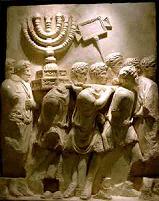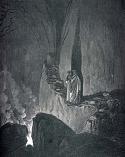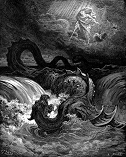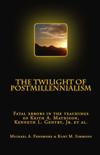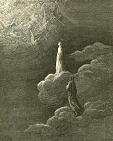John Wesley's Bimillennialism
[The following is taken from Wesley's Commentary on Revelation. As the reader will see, Wesley was of the opinion that there are two distinct "thousand-year" periods contemplated by Revelation 20:1-7, not one as urged by most modern exegetes. With some qualification, we agree with Wesley that the first millennial period begins and ends before the beginning of the second. However, in our view, the first (the binding of the dragon) spoke largely to the reign of Claudius who enforced the religio licita, restraining persecution of the church and ended with the persecution under Nero. The second (viewed exclusive of other deceased saints) speaks of the blessed state of the martyrs in Hades paradise who died under Nero (the beast). Thus, the one takes up where the other leaves off.] [1]
Verse 4
[4] And I saw thrones, and they sat upon them, and judgment was given unto them: and I saw the souls of them that were beheaded for the witness of Jesus, and for the word of God, and which had not worshipped the beast, neither his image, neither had received his mark upon their foreheads, or in their hands; and they lived and reigned with Christ a thousand years.
............................................
"A thousand years — It must be observed, that two distinct thousand years are mentioned throughout this whole passage. Each is mentioned thrice; the thousand wherein Satan is bound, verses 2, 3, 7; the thousand wherein the saints shall reign, verses 4-6. The former end before the end of the world; the latter reach to the general resurrection. So that the beginning and end of the former thousand is before the beginning and end of the latter. Therefore as in the second verse, at the first mention of the former; so in the fourth verse, at the first mention of the latter, it is only said, a thousand years; in the other places, "the thousand," verses 3, 5, 7, that is, the thousand mentioned before. During the former, the promises concerning the flourishing state of the church, shall be fulfilled; during the latter, while the saints reign with Christ in heaven, men on earth will be careless and secure."
Verse 5
[5] But the rest of the dead lived not again until the thousand years were finished. This is the first resurrection.
The rest of the dead lived not till the thousand years — Mentioned, verse 4.
Were ended — The thousand years during which Satan is bound both begin and end much sooner. The small time, and the second thousand years, begin at the same point, immediately after the first thousand. But neither the beginning of the first nor of the second thousand will be known to the men upon earth, as both the imprisonment of Satan and his loosing are transacted in the invisible world. By observing these two distinct thousand years, many difficulties are avoided. There is room enough for the fulfilling of all the prophecies, and those which before seemed to clash are reconciled; particularly those which speak, on the one hand, of a most flourishing state of the church as yet to come; and, on the other, of the fatal security of men in the last days of the world.
Notes:
[1] Viewed from the perspective that paradise and the first resurrection were inclusive of the righteous from Abel until the general resurrection, there would be a chronological overlap between the two millennia, but from the perspective of only the martyrs who died under Nero (the point of the passage), the second millennium would follow the first. However, chronology is not the point of the passage: the timeless nature of the Hadean realm and Graeco-Roman notions of Hades is, each thousand year period pointing to the objects' time in the nether realm prior to their respective resurrections.
To receive Kurt Simmons’ e-mail newsletter, The Sword & The Plow, click the Subscribe link:
All rights reserved.
